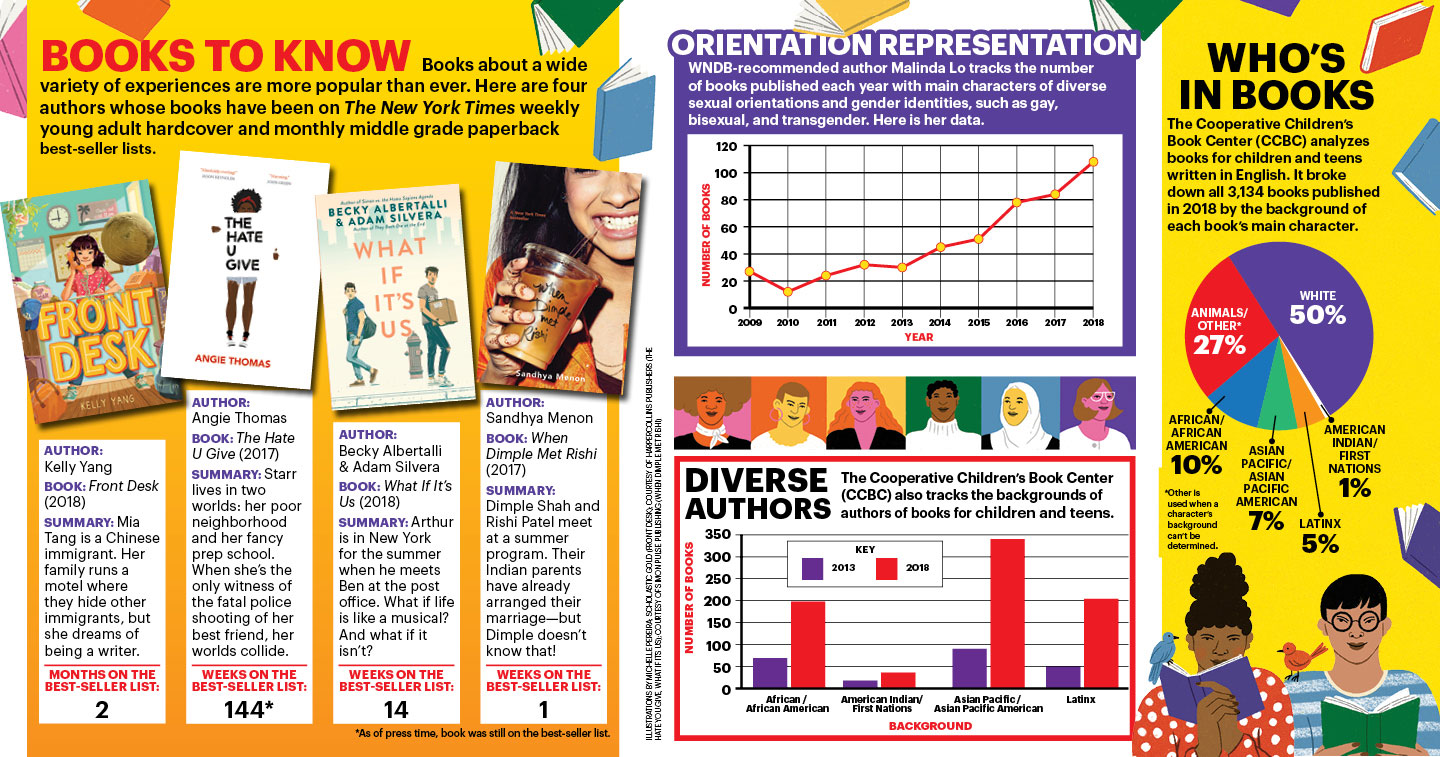When she was a kid growing up, none of the books Ellen Oh read had characters that looked like her. But when she was 19, she read The Joy Luck Club. Although Oh is Korean American, not Chinese like the book’s characters, she felt represented by them. “That book made me feel seen for the first time in my life,” Oh says.
Today, only 7 percent of children’s and young adult books published feature Asian characters. Some of those books are by Oh. She became a writer to create books about people who looked like her and her children.
Oh was also a member of the team of writers, illustrators, and publishers that created We Need Diverse Books (WNDB). It started as a Twitter hashtag that was widely used by readers and writers. The organization supports stories about ethnic, cultural, and religious minorities, people of different sexual orientations and gender identities, and people with disabilities written by authors who share those backgrounds.
It supports internships and runs workshops and retreats for people involved in publishing. WNDB partners with Scholastic to create collections of diverse books for Scholastic Book Clubs. (Scholastic also publishes Scholastic MATH.)
“If you aren’t represented in literature and media of your own country, it makes you feel forever foreign,” says Oh. “Representation is important to show marginalized kids that they really do belong. Representation helps all other kids know that too.”


